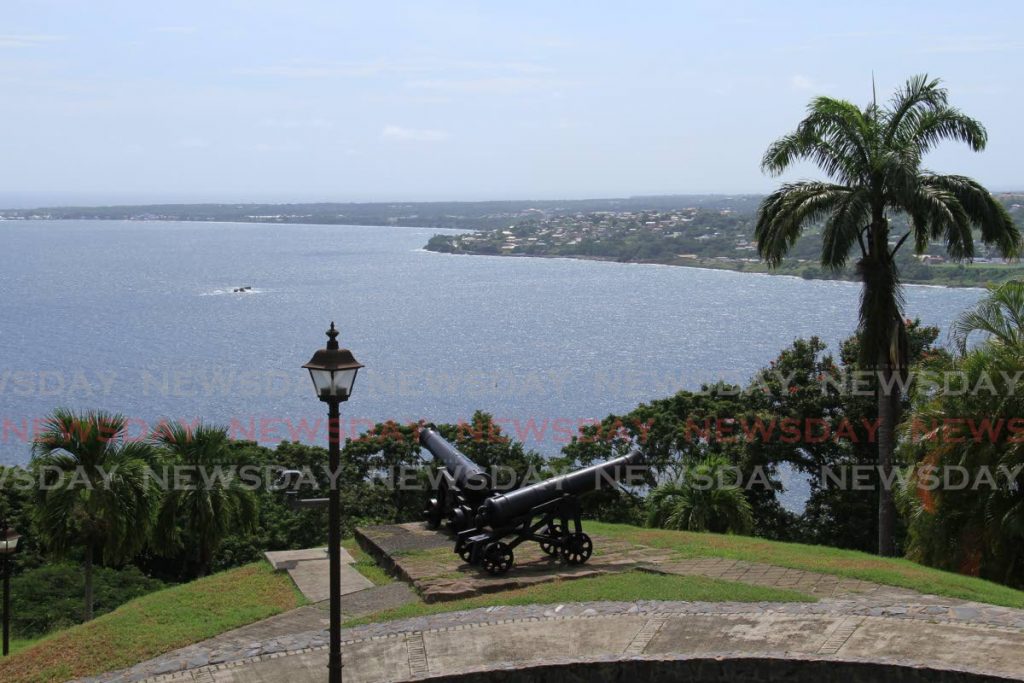Supplying captive African labour to Tobago

Dr Rita Pemberton
THE EUROPEAN countries which vied for possession of Tobago were intent on using the island to produce items which were highly valued in Europe. There was a high demand for tropical goods, particularly sugar, which attracted very high prices on the European markets.
A part of the competition for possession of Tobago was related to the need to obtain islands which were not fully occupied by any European country and were deemed to be “unoccupied” and therefore available for the taking. Hence an intense rivalry for possession of Tobago developed during the 17th and 18th centuries.
The rival nations which sought possession of Tobago all had plans to establish plantations on the island and therefore one of their priority areas was to provide the means to satisfy the labour needs for the establishment and operation of plantations.
The Dutch had established themselves as traders of the world, supplying labour and other essential items to the European colonies in the Americas and the Caribbean. It is therefore no surprise that the Dutch were the first Europeans to organise trade with Tobago, where they made a settlement and sought to claim it as a Dutch possession.
But the Dutch were not the only suppliers because each European country sought the means to provide its colonies with labour rather than depend on supplies from their rivals. Quite naturally, because the prevailing sentiment of the era, Africa was seen as the source of bodies that were suitable for labour and were available in large numbers.
The savage trade which commodified human beings had already been developed and was operative in Barbados when Tobago was subject to the myriad claims of European countries. While the island’s labour supply was brought from Africa, three factors are noteworthy.
Firstly, the ships which crossed the Atlantic with the human captives sailed from the coast of West Africa.
Secondly, each European country established its own forts, which played an important role in the trade of African bodies for they functioned as trading posts, they housed the captives until the ships crossing the Atlantic arrived and were ready to load their cargo.
In addition, European rivalry was reflected in the trade during which Africans were captured and sold. The forts served as military defences because the trade was pursued with intense competition from rival European traders.
The main Portuguese fort was El Mina, which was built in 1482 and fitted with cannons facing the sea to ward off rival traders. French forts were established on Goree Island in Cape Verde and Saint Louis in Senegal. The Dutch established their forts in the area called the Dutch Gold Coast, which included Dutch Guinea, and they captured El Mina from the Portuguese. The British established over 50 forts between the Senegambia and the Bight of Benin.
By these means, the European participants empowered themselves to defend their leg of the human trade.
Thirdly, the departure points from the African coast are no indication of the origins of the captives since they were obtained from distant regions across Africa and were purchased from inland slave markets, as well as from those located on the coast.
The captives destined for Tobago were brought to the island by the European country which occupied it. Slave trading in Tobago began with Dutch traders. The first occurred when, in 1656, a Dutch ship sailed from Vlissingen to Loango in West Africa and returned to Tobago with 121 captive Africans who were put to work on plantations which the Dutch were trying to establish on the island.
More labourers were required to work on the Dutch settlements which were growing in size and the plantations they established, hence in 1659 another Dutch ship sailed from New Calibar in West Africa and arrived in Tobago with 191 captives. But in 1660 the Latvians, who also made a settlement in Tobago, brought 109 Africans to the island.
Both groups continued to occupy the island and in 1662 the Dutch brought 281 Africans; in 1663, 391; and in 1664, 281 Africans, while the Zeelanders brought 191 in 1670. After this date the trade to Tobago was fully controlled by the British, which gained possession by the treaty of 1763.
The British era of slave trading in Tobago coincides with their determination to create a plantation out of the island as a means to prevent a possible French recapture of the island. From 1771 British ships sailed from London, Bristol and Liverpool with increased frequency and brought captives from Cape Coast, Gold Coast Gambia, Benin, Sierra Leone, New Calabar, the Windward Coast, Congo River and West Central Africa.
During the period 1781-1793 when the French occupied Tobago, French ships sailed from Le Havre to Gold Coast, from which area their captives were mainly sourced. When the island reverted to British possession, British ships resumed command of the trade, bringing captive Africans in larger numbers than before.
The growth of the anti-slavery movement, which was gaining support in Britain, was seen as a threat to the plantation operations in the British colonies. The pro-slavery group launched a strong campaign to no avail. The British parliament passed the Limitation Law which restricted the number of captives that could be introduced into new colonies, which included Tobago.
Tobago planters tried to convince the imperial authorities that they should be exempted because of the difficulties they endured with the French occupations in 1871 and 1801/2. The British answer was the termination of the British slave trade in 1808.
After this period there were no further introductions of African-born enslaved labourers on the island. Plantation owners had to rely on the locally-born, African-descended population to provide their labour needs.


Comments
"Supplying captive African labour to Tobago"